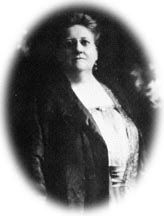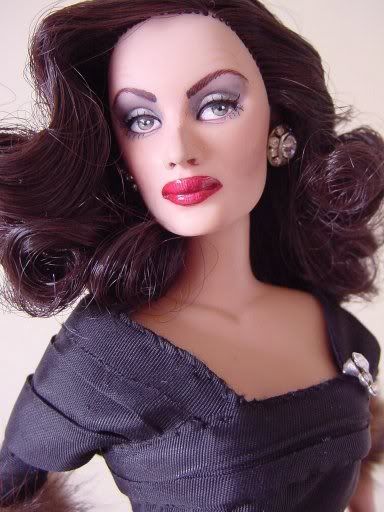It's still poetry month, right?
So I had this dream once. I was a young, impressionable undergrad English major, in the first throes of feminist fervor, discovering Gilbert and Gubar, realizing that the world was unjust and unfair to women, particularly women who write, and I decided to change it.
Well, more like, I knew I could be an Oscar-winning actress, a prima donna singer, maybe even the world's best, albeit least trained dancer. But being kind of lazy, I thought I would chase celebrity via an easier, more sure-fire route, namely academics. More specifically, feminist literary criticism. Smokin' hot, right?
(This Margo, she is not too bright, eh?)
I entered grad school with a plan: find a forgotten female modernist writer, rediscover her, write compelling, irresistable criticism, find some great photos and Voila! I'm the next Rachel Blau Duplessis, or Susan Stanford Friedman. Problem was, they'd already called dibs (and done work on) H.D. Djuna Barnes? Too late. Natalie Barney? Um, she slept with a lot of people and had a great salon, but she didn't really write anything, except Oscar Wilde-type witty epigrams. Could I really write a dissertation-cum-crossover-best-seller based on witty epigrams? Besides, Karla Jay already got to her. And sister, when you're entering grad school in 1992, don't even THINK you're gonna get to write about Virginia Woolf.
By the time I got to my doctoral exams I had resigned myself to correcting the oversights of the feminist literary critics who had come before me--I just needed a good hook, a good way to squeeze them all into one manuscript. A shopping mall approach to scholarship. The hook never came, but the forgotten modernist writer did. Really, when I least expected her, there she was in my Norton Anthology of Women Writers. I fell in love hard and fast.
My advisor had insisted I add some poems by Amy Lowell to my modernist reading list. I resisted, because I knew I knew everything there was to know about her--fat, rich, bossy, more of an impresario than a poet. A gnat circling around H.D., a b-list modernist, Ezra Pound's nemesis. But then I read some and I was hooked. It didn't hurt that I had just begun my first lesbian relationship and these poems were hot, hot, hot. We're talking unfolding flowers, dripping stamens, peeled almonds, the works.
And so began my love affair with Amy Lowell. Since then I've written a dissertation on her, co-edited an edition of her poems, and a collection of critical essays about her. I've been preparing to take my leave of her, in order to prove my academic credibility, but I've got a good job in a supportive department and so I feel like I can take a risk and write my old-fashioned single-author manuscript after all. Tomorrow I'm giving a reading at my favorite feminist book store on her, because it's poetry month and all. And because I asked.
That's the thing about writing about forgotten impresarios. You have to become one yourself. But my product, this Amy Lowell, she's really stunning.

Well, more like, I knew I could be an Oscar-winning actress, a prima donna singer, maybe even the world's best, albeit least trained dancer. But being kind of lazy, I thought I would chase celebrity via an easier, more sure-fire route, namely academics. More specifically, feminist literary criticism. Smokin' hot, right?
(This Margo, she is not too bright, eh?)
I entered grad school with a plan: find a forgotten female modernist writer, rediscover her, write compelling, irresistable criticism, find some great photos and Voila! I'm the next Rachel Blau Duplessis, or Susan Stanford Friedman. Problem was, they'd already called dibs (and done work on) H.D. Djuna Barnes? Too late. Natalie Barney? Um, she slept with a lot of people and had a great salon, but she didn't really write anything, except Oscar Wilde-type witty epigrams. Could I really write a dissertation-cum-crossover-best-seller based on witty epigrams? Besides, Karla Jay already got to her. And sister, when you're entering grad school in 1992, don't even THINK you're gonna get to write about Virginia Woolf.
By the time I got to my doctoral exams I had resigned myself to correcting the oversights of the feminist literary critics who had come before me--I just needed a good hook, a good way to squeeze them all into one manuscript. A shopping mall approach to scholarship. The hook never came, but the forgotten modernist writer did. Really, when I least expected her, there she was in my Norton Anthology of Women Writers. I fell in love hard and fast.
My advisor had insisted I add some poems by Amy Lowell to my modernist reading list. I resisted, because I knew I knew everything there was to know about her--fat, rich, bossy, more of an impresario than a poet. A gnat circling around H.D., a b-list modernist, Ezra Pound's nemesis. But then I read some and I was hooked. It didn't hurt that I had just begun my first lesbian relationship and these poems were hot, hot, hot. We're talking unfolding flowers, dripping stamens, peeled almonds, the works.
And so began my love affair with Amy Lowell. Since then I've written a dissertation on her, co-edited an edition of her poems, and a collection of critical essays about her. I've been preparing to take my leave of her, in order to prove my academic credibility, but I've got a good job in a supportive department and so I feel like I can take a risk and write my old-fashioned single-author manuscript after all. Tomorrow I'm giving a reading at my favorite feminist book store on her, because it's poetry month and all. And because I asked.
That's the thing about writing about forgotten impresarios. You have to become one yourself. But my product, this Amy Lowell, she's really stunning.

Amy Lowell (1874-1925)
THE WEATHER-VANE POINTS SOUTH
*Published in Pictures of the Floating World (1919) as “The Weather Cock Points South”
*Published in Pictures of the Floating World (1919) as “The Weather Cock Points South”
I put your leaves aside,
One by one:
The stiff, broad outer leaves;
The smaller ones,
Pleasant to touch, veined with purple;
The glazed inner leaves.
One by one
I parted you from your leaves,
Until you stood up like a white flower
Swaying slightly in the evening wind.
White flower,
Flower of wax, of jade,
of unstreaked agate;
Flower with surfaces of ice,
With shadows faintly crimson.
Where in all the garden is there such a flower?
The stars crowd through the lilac leaves
To look at you.
The low moon brightens you with silver.
The bud is more than the calyx.
There is nothing to equal a white bud,
Of no colour, and of all;
Burnished by moonlight,
Thrust upon by a softly-swinging wind.
Vanity Fair, June 1919
One by one:
The stiff, broad outer leaves;
The smaller ones,
Pleasant to touch, veined with purple;
The glazed inner leaves.
One by one
I parted you from your leaves,
Until you stood up like a white flower
Swaying slightly in the evening wind.
White flower,
Flower of wax, of jade,
of unstreaked agate;
Flower with surfaces of ice,
With shadows faintly crimson.
Where in all the garden is there such a flower?
The stars crowd through the lilac leaves
To look at you.
The low moon brightens you with silver.
The bud is more than the calyx.
There is nothing to equal a white bud,
Of no colour, and of all;
Burnished by moonlight,
Thrust upon by a softly-swinging wind.
Vanity Fair, June 1919


0 Comments:
Post a Comment
<< Home